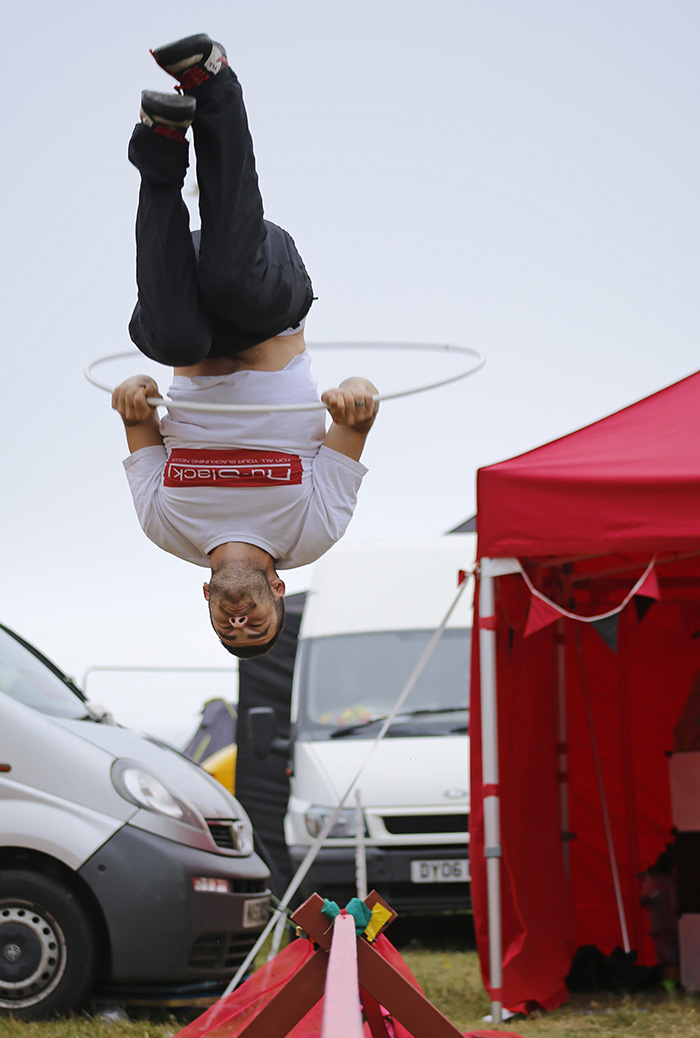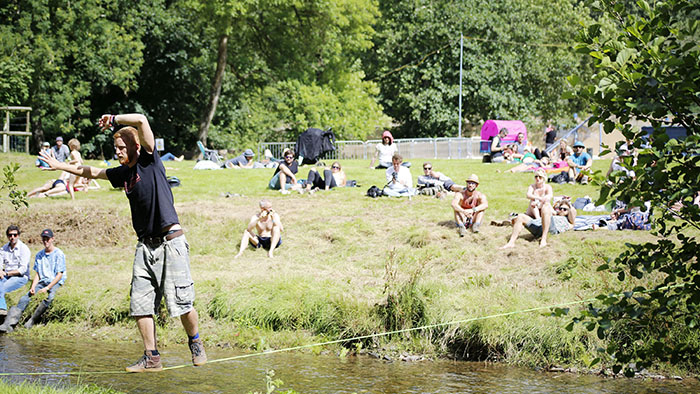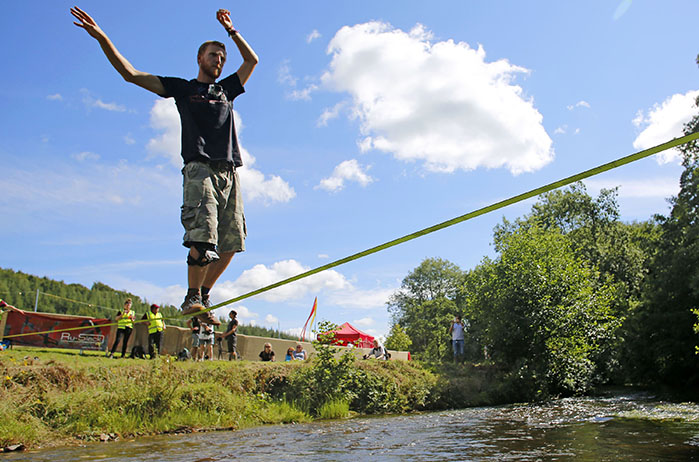So many people all over the world are starting to take up this new and exciting sport, and so it’s not surprising that there is a growing scene here in the UAE. Tim Emmett, a climber and extreme sports athlete, has even gone so far to say that “Slacklining is where climbing was 30 years ago”. Taking all this into consideration, it might be time for us to look at some of the potential benefits that slacklining could bring not only to oneself, but to the outdoor industry and beyond. The first and most obvious question to answer may of course well be…
What is Slacklining?
Well slacklining is essentially a balancing and challenging activity that typically uses polyester or nylon webbing (a bit like a very wide climbing sling) tensioned between two anchor points normally trees. The most commonly seen and easy to use slacklines use a ratchet for the tensioning system, however there are other options available depending on the style of slacklining you’re going for.
As the slacklining community grows and the sport develops, more people are pushing the limits of what is commonly known as slacklining. Here are a few different variations of (self-explanatory) slacklining style’s to try your balance at; Tricklining, Longlining, Highlining, Waterlining and Yogalining. Slacklining has an emerging community here in the UAE and Oman and has grown extensively over the last few years elsewhere. Due to its success, it now boasts a world cup, national competitions, slackline clubs and even a number of festivals devoted to it.

One of the great things about slacklining is that it can be done almost anywhere that there are suitable anchor points and even if there’s not any, you can make your own. Generally two trees of about one metre in circumference are used (always with tree protection); for beginners these tend to be spread over a distance of about 9 – 14 metres with a clear level space between (a soft landing tends to help, such as grass or sand). However, if you don’t have access to any trees or you’re out in the desert, then a system of either temporary or permanent ground anchors can be fashioned from metal stakes or wood in the form of a dead-man’s anchor. If this is the case then a simple A-frame can be used to raise the line from floor level. Once the line is up (no higher than your crotch as a novice) you’re ready to go. First, there are four unbreakable rules to keep in mind that will help perfect anyone’s slacklining ability:
- Eyes Forward – Find a fixed point at the end of the line, such as the anchors or the tree.
- Toes Forward – Keep your toes and heels facing along the line towards the anchors.
- Hands Up – Keep your arms raised and hands up, bending at the elbow as opposed to the shoulder.
- Hips Forward – Ensure to keep your back straight and hips forward. Keep in mind that as soon as you lean forward you start to lose balance.
- Eyes Straight – Keep your eyes focused on the end of a slackline. Do not look at your feet, the slackline will always be in front of your other foot.
So Why do I Want Get Involved with Slacklining?

As slacklining is a relatively new activity especially out here in the Middle East, there are currently an extremely limited number of providers and facilitators offering these sessions to the general public. This said; slacklining is the sort of activity you can self-learn the basics from websites. Slacklines are also relatively cheap compared with other outdoor activity’s equipment; for instance a quality slackline can be purchased for approximately 600 AED for a 15m ratchet system. This provides a great opportunity for an individual or organisation to get involved in something exciting and intriguing that most people wouldn’t have seen or had the opportunity to try. It’s also an activity in which participants can progress at their own rate without being forced or held up by others whilst still training and playing together.
What benefits can slacklining bring me personally?

At first look, there are the obvious benefits for balance, coordination and personal motor skills development. These fundamental skills that work on posture and core strength are useful in a wide variety of outdoor activities and in everyday life. In addition to the physical advantages, and perhaps somewhat surprisingly, there is evidence of an increase in the structural and functional plasticity of the hippocampus, an area of the brain responsible for navigation and memory.
As a parting note, my advice to you is to try it for yourself with colleagues, friends or family. Be open-minded as to the possibilities this activity can bring you. As I said earlier, here in the UAE there is a growing scene for slacklining and highlining, and it’s easy to understand why. At first you may only be able to stand up with assistance and then only be able to take a couple of steps but in no time you will be walking backwards, walking longer and longer lines and then maybe even getting some gymnastics-inspired bouncing going. As a final note, if I were to highlight three things I think that you should take away from this article, they would be; to always use tree protection or seek anchors that are strong enough, seek advice if you ever plan to set up a slackline that is above waist height, but most importantly, give it a go!

